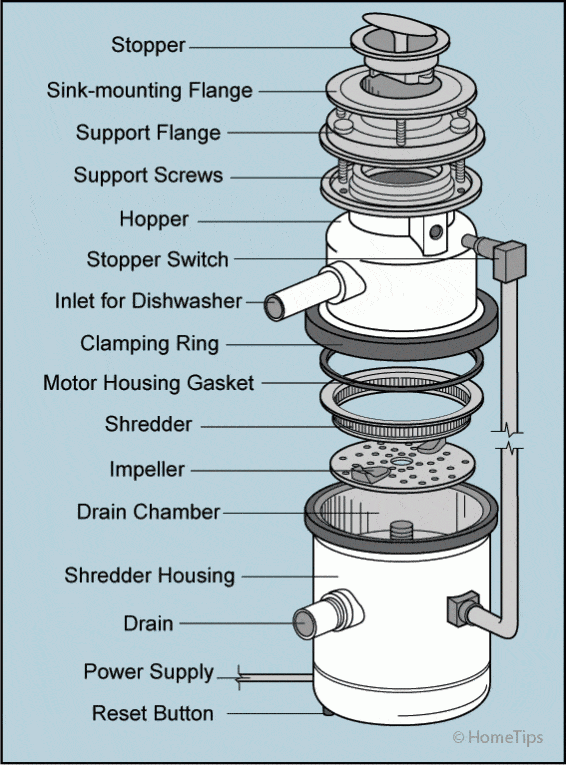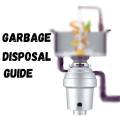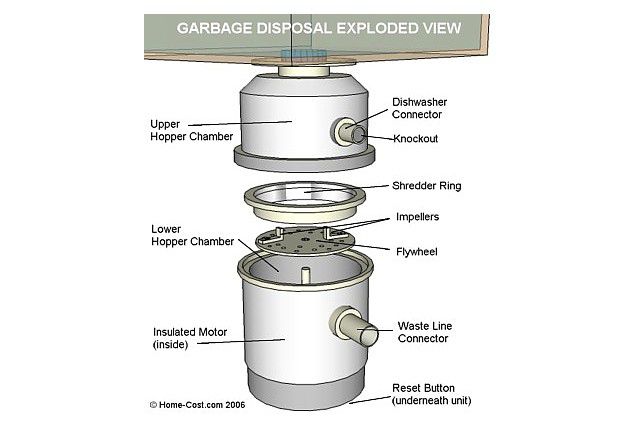Food disposals are essential kitchen gadgets. They help us get rid of food waste quickly. But, do you know how they work? Let’s explore the parts of a food disposal and how to maintain them.
:max_bytes(150000):strip_icc()/gar_disp_bottom_view-56a4a1c45f9b58b7d0d7e72b.jpg)
Credit: www.thespruce.com
Key Parts of a Food Disposal
Food disposals have several important parts. Each part has a specific job. Here are the main parts:
- Motor: The motor powers the disposal. It grinds the food waste into tiny pieces.
- Grinding Chamber: This chamber holds the food waste. It contains the shredding blades.
- Shredding Blades: These blades cut the food into small bits. They are very sharp.
- Impellers: Impellers push the food waste against the shredding blades. They help in grinding the food.
- Flywheel: The flywheel spins the impellers and blades. It is connected to the motor.
- Sink Flange: This part connects the disposal to the sink. It ensures a tight seal.
- Splash Guard: The splash guard prevents water and food from splashing out. It fits around the sink flange.
- Discharge Pipe: This pipe carries the ground food waste to the drain. It connects to the plumbing system.
How Food Disposals Work
Food disposals are simple machines. When you turn it on, the motor starts. The flywheel spins the impellers and shredding blades. Food waste enters the grinding chamber. The shredding blades cut the food into tiny pieces. The impellers push the food against the blades. The ground food passes through the discharge pipe. It goes into the plumbing system.
Common Problems and Solutions
Food disposals can have problems. Here are some common issues and how to fix them:
| Problem | Solution |
|---|---|
| Disposal won’t turn on | Check the power source. Make sure it’s plugged in. Press the reset button. If it still doesn’t work, call a professional. |
| Disposal is jammed | Turn off the disposal. Use a wrench to turn the flywheel. This can free the jam. Never use your hands to clear a jam. |
| Disposal is leaking | Check the connections. Tighten any loose parts. Replace worn-out seals or gaskets. |
| Disposal is making noise | It could be a foreign object. Turn off the disposal. Remove the object using tongs or pliers. |
Maintenance Tips
Proper maintenance extends the life of your food disposal. Here are some tips:
- Run cold water: Always run cold water when using the disposal. This helps solidify any grease or fat. It makes grinding easier.
- Use ice cubes: Grind ice cubes regularly. This helps clean the blades and remove any stuck food.
- Avoid certain foods: Don’t put fibrous foods like celery or corn husks in the disposal. They can wrap around the blades and cause jams.
- Clean with vinegar and baking soda: Pour a mixture of vinegar and baking soda into the disposal. Let it sit for a few minutes. Then, rinse with cold water. This helps remove odors and clean the disposal.
- Check for leaks: Regularly inspect the disposal for leaks. Tighten any loose connections.

Credit: www.hometips.com
When to Replace Your Food Disposal
Food disposals don’t last forever. Here are signs you may need a new one:
- The disposal is over 10 years old.
- It frequently jams or stops working.
- It’s leaking and can’t be fixed.
- It’s making unusual noises.
- The motor is weak or not working.
Choosing a New Food Disposal
When it’s time to replace your disposal, consider these factors:
- Motor power: More power means better grinding. Look for disposals with at least 1/2 horsepower.
- Noise level: Some disposals are quieter than others. Look for models with noise-reducing features.
- Durability: Stainless steel components last longer. They resist rust and corrosion.
- Warranty: A longer warranty means better protection. Look for disposals with at least a 5-year warranty.
Frequently Asked Questions
What Are Food Disposal Parts?
Food disposal parts include blades, splash guards, and mounting assemblies.
How To Replace Disposal Blades?
Turn off power, remove disposal, and install new blades.
Can Disposal Parts Be Cleaned?
Yes, clean parts with mild soap and water.
Where To Buy Disposal Parts?
Purchase from hardware stores or online retailers.
Conclusion
Food disposals are useful kitchen tools. Knowing the parts and how they work can help you maintain them. Proper maintenance can extend their life. When it’s time to replace your disposal, choose wisely. Consider motor power, noise level, durability, and warranty. Happy grinding!

